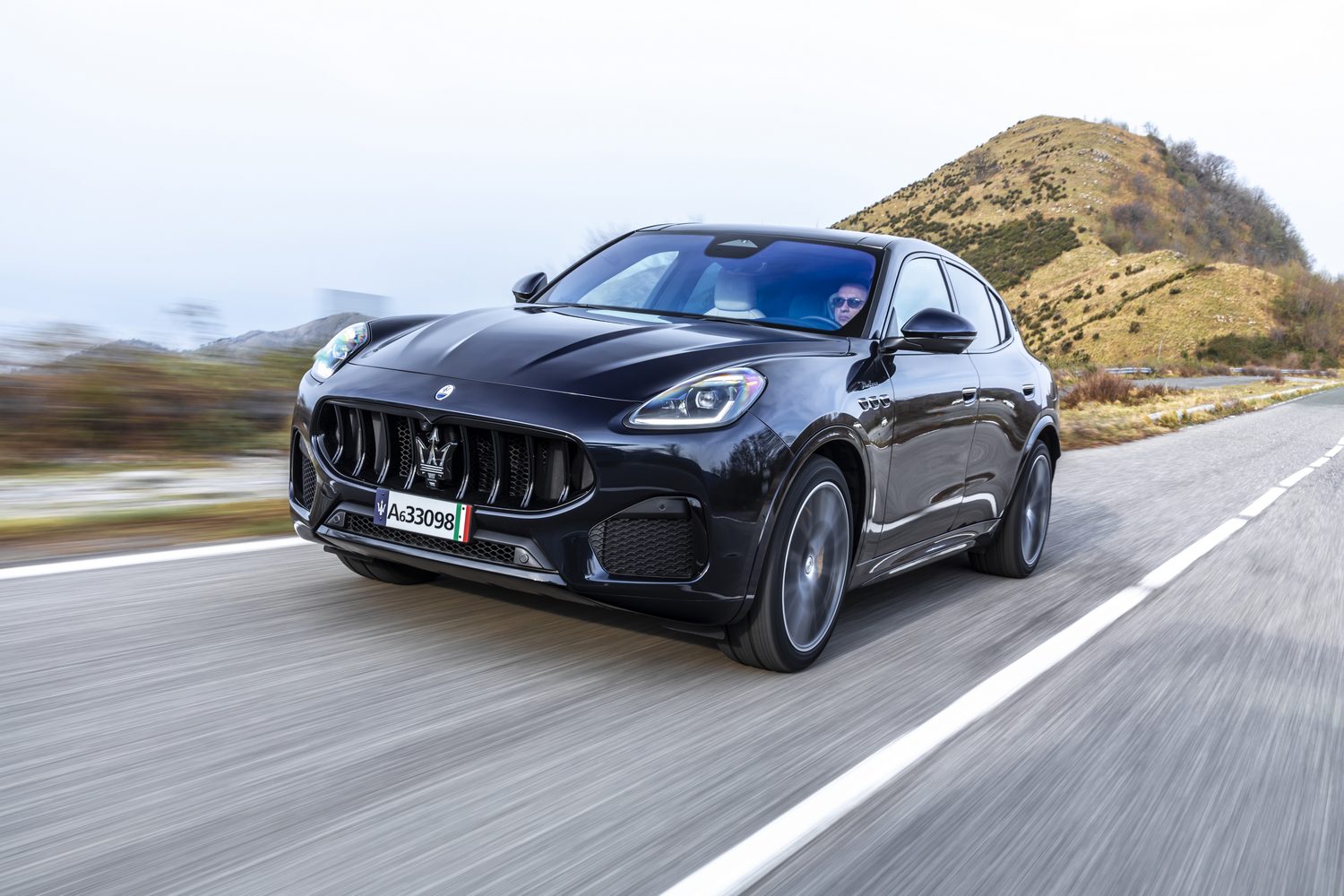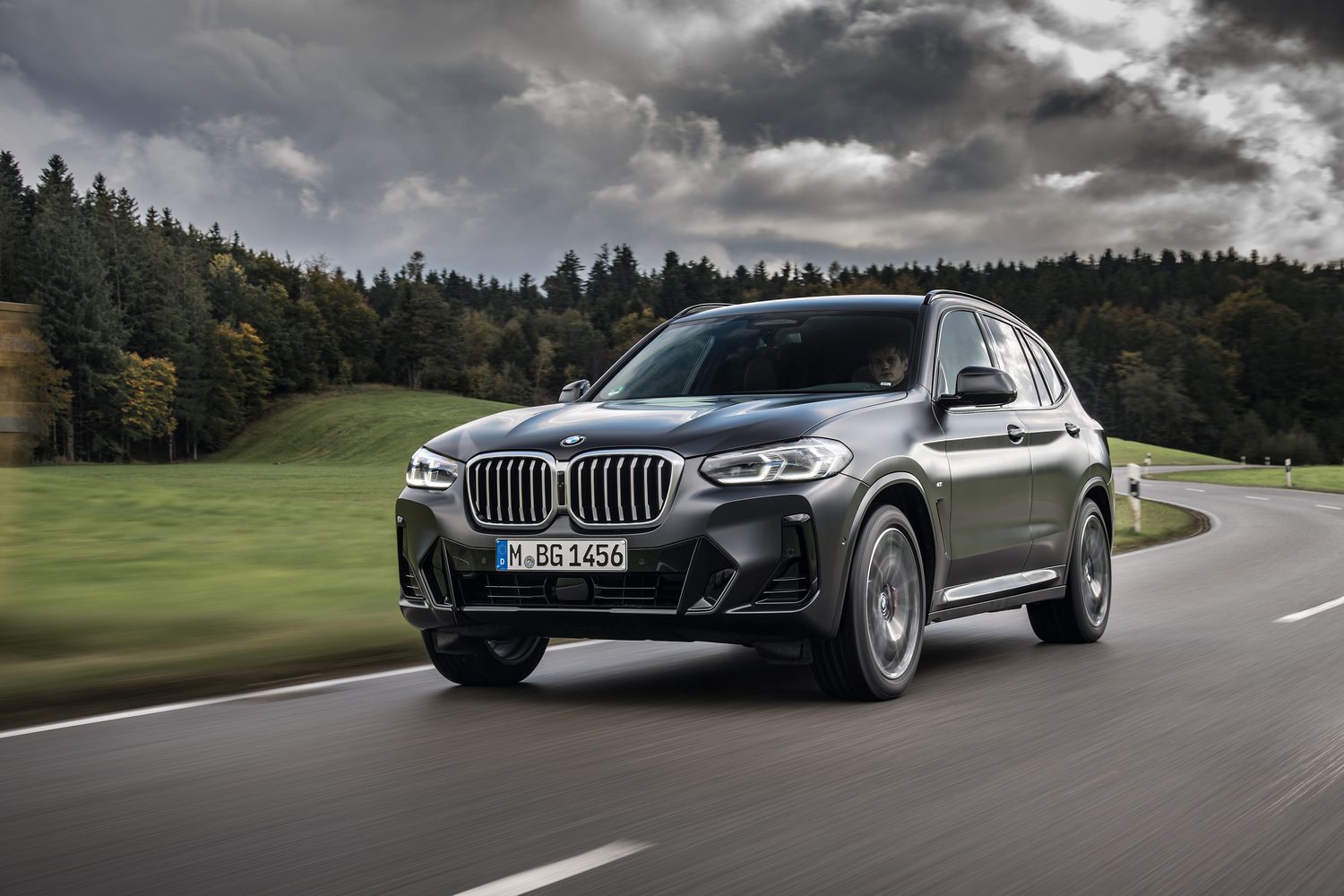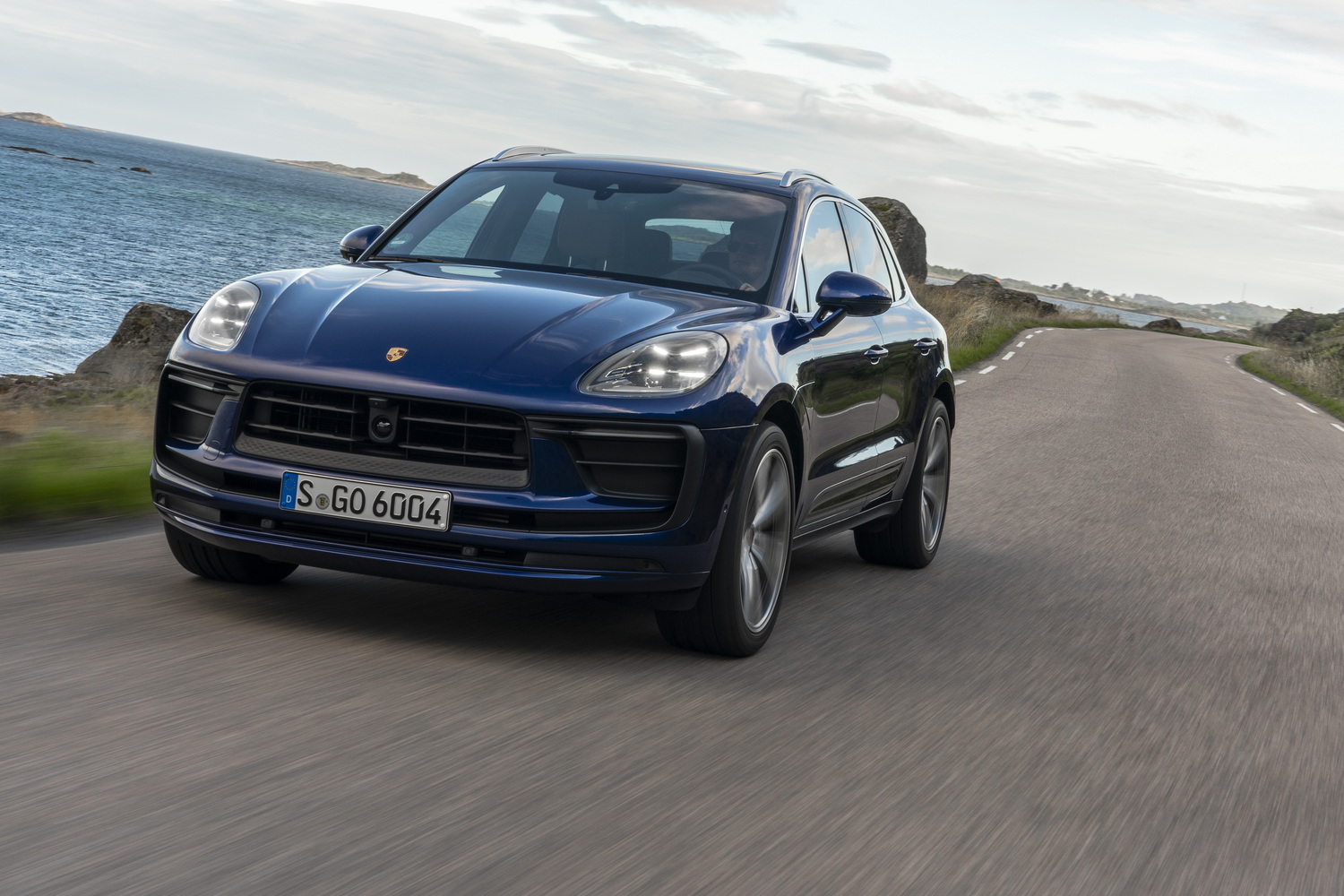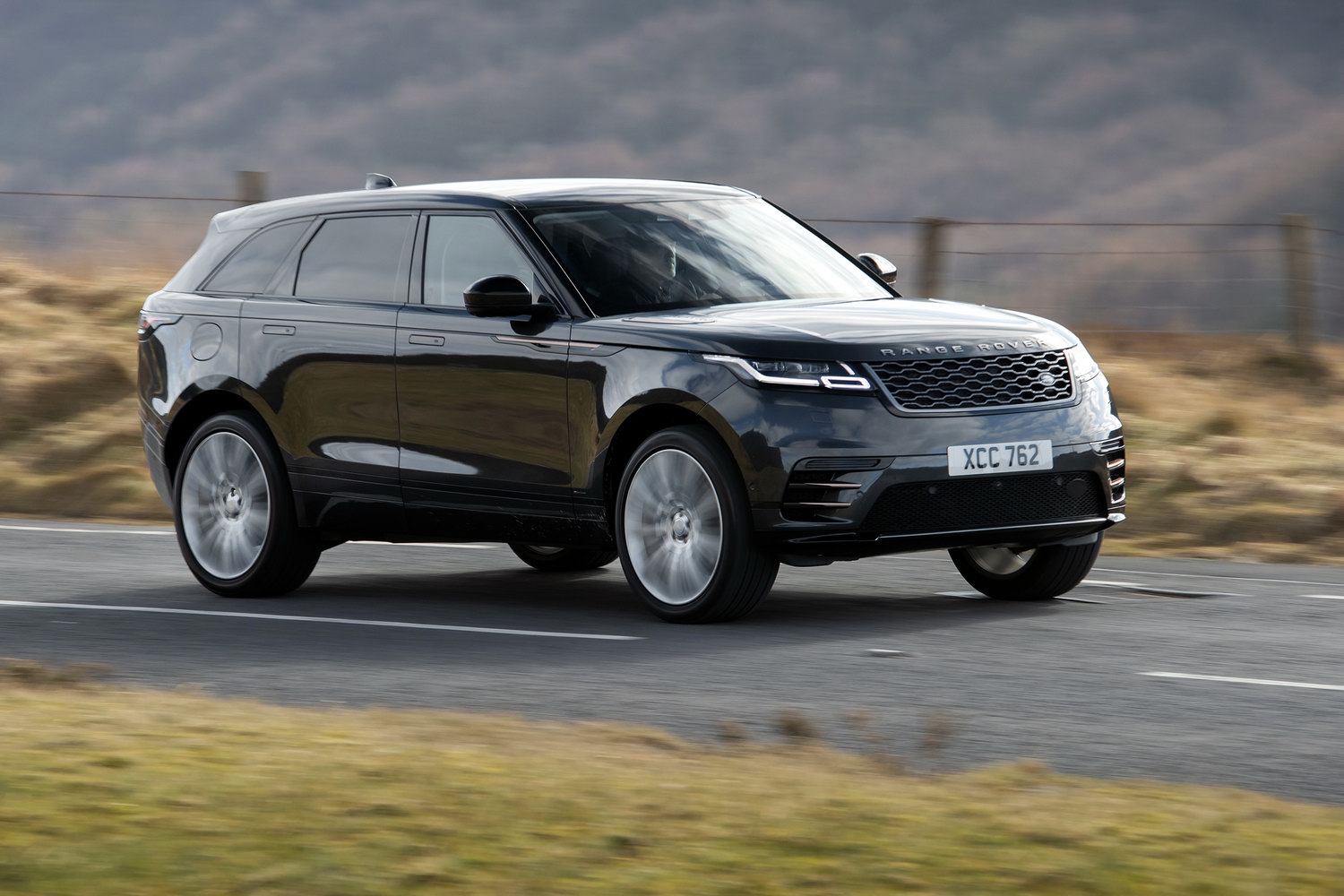We first crossed paths with the Maserati Grecale SUV earlier this year, and came away from the experience underwhelmed. After driving a basic GT model and the range-topping Trofeo on winter tyres in the heat of a Milanese spring, our first drive reviews tentatively suggested the Grecale had its talents, but lacked the polish of the BMW X3 and Porsche Macan.
Now, we've got our hands on the mid-range Modena variant, which is expected to be a top seller in right-hand-drive markets, and it's shod in summer tyres. So will this version, which marries some of the Trofeo's mechanical upgrades with an uprated version of the GT's 2.0-litre mild-hybrid powertrain, prove more convincing?
In the metal
If you ignore the badges on the wings, the Grecale Modena looks pretty much exactly the same as the lowlier GT model. That means you get the same basic shape, with the slanted rear window and the big grille, as well as the doe-eyed headlights and the curved bonnet. That's good news as far as we're concerned, because the Grecale is handsome enough in any form. Perhaps the Trofeo, with its more aggressive tweaks, is the more interesting option, but for all the Grecale's detractors, it's hardly ugly.
And it looks great inside, too, with a cabin that's vastly different to anything Maserati has produced before. There's a huge amount of technology, with two touchscreens in the middle and a digital instrument display in front of the driver, as well as a digital clock face that can be modified to show information such as compass heading or a G-reading.
But tech isn't the only aspect of the Grecale's cabin that's worthy of note. The design is more flowing and modern than before, with lovely, sculpted surfaces and an appealing use of premium materials on the dashboard. Admittedly, while the leather and wood look and feel great, the chrome-effect trim is a little less impressive, but generally it's a massive upgrade compared with what's gone before, both in terms of build quality and the materials used.
Except for the steering wheel, which is a bit of a mess. Not only do the plasticky buttons feel cheap and tacky, but they are unintelligible in bright sunlight, and the lack of any logical shapes or layout means you can't even guess at what they all do. And there's the ergonomics of having a paddle-shift gearbox and indicator stalks in such close proximity. It's easy to go for a gear and find yourself indicating by accident.
Thankfully, most of this Italian-ness has been dialled out slightly by the new technology. That means there's less switchgear to muddle and more touchscreen toys to play with. Overall, the systems are a considerable improvement on the old Maserati touchscreens, but that doesn't mean they're perfect. There's a little hesitancy with the top screen (which houses the navigation system) and the bottom screen feels quite fussy, but at least they look good and work well, even if you do need very slim fingers to press some of the icons.
The Grecale comes with a configurable driver display, and that's a mixed blessing. While it works pretty well and looks quite modern, it has denied Maserati the chance to fit its gorgeous traditional blue dials that look so cool and classy. Still, while it may not be as good as Audi's Virtual Cockpit, which remains the gold standard for such systems, it's well integrated with the touchscreen and it does the job without too much fuss.
But perhaps the best thing about the Grecale is its plentiful interior space. Because it's essentially a stretched Alfa Romeo Stelvio underneath, it has ample rear cabin space for all but the tallest passengers, who might find headroom a little tight thanks to the rakish roofline. And the 535-litre boot is pretty generous too, although the go-faster Trofeo model - which goes without the space-sapping mild-hybrid technology - is even more spacious.
Driving it
In essence, the mid-range Modena model comes with the same 2.0-litre petrol engine as the basic GT, albeit with an extra 30hp. But Maserati is adamant that this car is more than just a slightly more powerful Grecale GT. For starters, the Modena comes with active shock absorbers as standard and it rides on 20-inch wheels, both of which will have some effect on the ride.
Maserati claimed our pre-production test car was "90 per cent" of what the brand wanted it to be in terms of ride comfort and handling balance, and this is the first time we've driven a Grecale on summer tyres, but our impressions more or less married with what we learned when we drove the Grecale GT in April.
As a result, the car generally rode pretty well over even the most scarred surfaces, but it struggled slightly more with smooth motorway asphalt. There, it felt a little gravelly and nuggety, even at cruising speeds. Whether that's the effect Maserati is trying to tune out at this late stage remains to be seen, but that's the only criticism we'd have thus far. It's largely a comfortable way of getting from A to B.
But the Maserati brand is about sportiness and luxury together, so aiming for maximum ride comfort seems to be a bold move, particularly when the Trofeo model is so agile. The Modena doesn't feel quite so keen to handle, even though it has reasonably quick steering and a rear-biased all-wheel-drive system. It turns in quite sharply, but it leans quite a lot in corners and there's an unpleasant woolliness to the steering that makes it feel vague and uninvolving. That's a real shame, because the Trofeo feels much more rounded and engaging.
As well as playing second fiddle to the Trofeo in terms of handling, the Modena also has to make do with the 2.0-litre, four-cylinder mild-hybrid powertrain. It's far from the worst engine of its type, but it doesn't have the character or the muscle of the Trofeo's 'Nettuno' V6. Maserati claims to have tuned the in-line four-cylinder to sound like a V8, but it hasn't worked. It has a little burble about it at idle, but there's no hiding the lack of displacement and cylinders when you climb the rev range. That said, it's very refined around town and even at motorway cruising speeds
Although giving the engine a workout might reveal its vocal shortcomings, it won't reveal any problem with performance. With 330hp going through the eight-speed automatic gearbox and then being distributed between the front and rear axles, it's capable of 0-100km/h in 5.3 seconds (three tenths faster than the GT) and that's quick enough for any SUV driver.
For all that, though, the Modena is expected to be popular in Europe not because of its pace, but because of its economy. For a mild hybrid, a 9.0 litres/100km thirst doesn't sound that impressive, but it looks better when you frame it as a 330hp petrol-powered SUV with all-wheel drive. For context, a 300hp, 2.0-litre Porsche Macan is thirstier, burning its way through 10 litres every 100km. And while CO2 emissions of 203g/km mean you'll pay €1,250 in tax just for the privilege of driving the car in Ireland, you'll pay almost twice that for any kind of Macan.
What you get for your money
There are no Maserati dealers in the Republic of Ireland. That said, you can buy one from Charles Hurst Belfast, where the basic GT model is considerably more expensive than the basic 2.0-litre Porsche Macan and even the mid-range, V6-powered Macan S. This Modena version is even more expensive, putting it almost on a par with the top-end Macan GTS.
But although it's expensive, the Grecale Modena does at least come with plenty of equipment: 20-inch alloy wheels, leather upholstery and wood trim are all included as standard, along with the touchscreens and four-zone climate control, as well as rafts of safety equipment
Summary
Like every other Grecale we've driven, the Modena suffers not from a lack of talent, but from a lack of polish. It just doesn't feel as complete as an comparable Porsche or BMW, despite its qualities. The Modena also feels less sure of itself than the Trofeo, which has a more clearly defined brief, but the balance of refinement, economy and luxury should ensure this is one of the best-selling models in the Grecale range - particularly in western Europe.

































